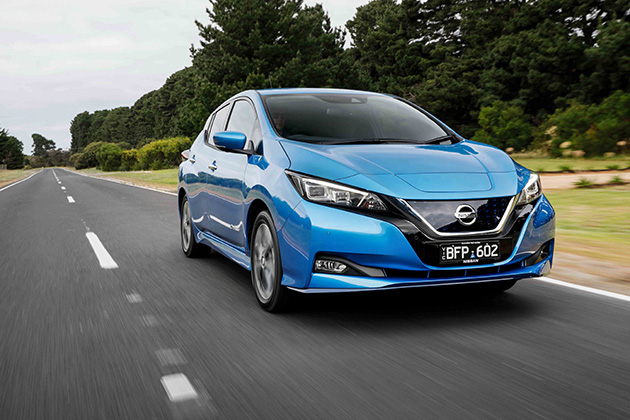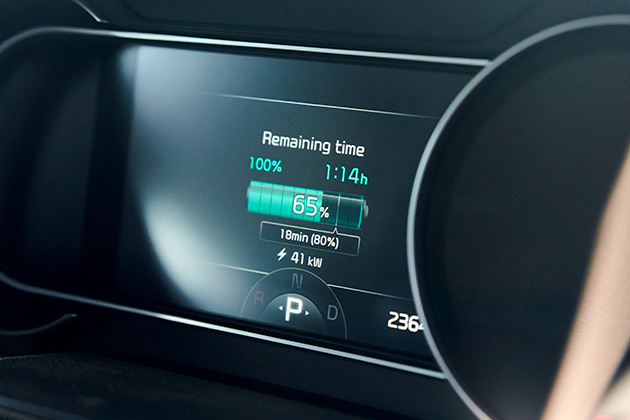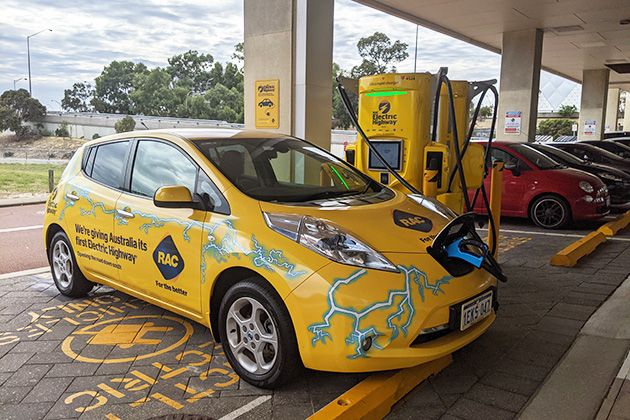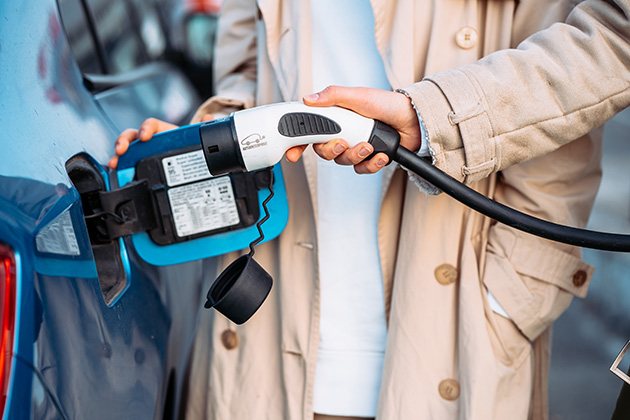Most experts agree that the next decade will be when electric vehicles (EVs) hit critical mass on the global market.
Car makers have been ramping up their development of electrified vehicles to help meet increasingly tougher anti-pollution regulations. Cities such as Paris are even calling for bans on internal combustion engine (ICE) vehicles - the kind that use petrol and diesel - by 2030.
For fans frustrated with the general apathy towards electric cars in Australia, while there has been some lack of enthusiasm for providing incentives to encourage the uptake of electric vehicles (EV) in Australia, there have been significant improvements made to the EV charging infrastructure needed to make EVs more viable.
Multinational oil companies are finally set to fit fast charger outlets to petrol stations as they already do in many other countries.
Recent years have also seen an improvement in the selection of EVs available for sale in Australia, however this is still some way behind the range of EVs available in overseas markets such Europe and the USA.
RELATED:
Electric cars available in Australia in 2022 »
RELATED: Are electric cars cheaper to service and maintain? »
Prices are starting to come down
Among the more affordable EVs to become available are the MG ZS EV, which starts at $43,990 drive away. The next cheapest EV after that, for the time being, is the Hyundai Ioniq Electric, which starts from $54,415 drive away. Then there’s the Renault’s electric small van, the Kangoo Maxi Z.E. Electric, which costs $55,740 on the road.
However, with the EV market in Australia expanding, the above is subject to change.
If you can afford to step up in price by about $15,000, you’ll get bigger batteries, notably more range and more choice.
In April 2021, Hyundai launched an updated Kona Electric, which is a small electric SUV that originally arrived in Australia in 2019. The latest version brought with it some extra safety features and a different look, but also a price rise of $1260. This new Kona will cost $68,435 drive away.
In a similar price range is the Nissan Leaf e+, which also arrived in Australia in April 2021 and is the new top-of-the-range version of Nissan’s long-running EV.

The most significant aspect of the new Leaf e+ is its increased range of 385km thanks to its significantly bigger battery, which has 62kWh of energy storage – up from the regular Leaf’s 40kWh battery.
The Leaf e+ costs $64,990 drive away, but if you can handle a shorter range of 270km, then the regular Leaf with the 40kWh battery is an option at $53,190.
Then in May 2021, Kia launched its Niro EV in Australia. The Niro is based on the same platform as the Hyundai Kona Electric, including the 64kWh battery pack which delivers a claimed 455km of range.
The Niro’s pricing starts at $67,490 drive away for the S, while the Sport is $70,990.
The cost of the Kia Niro, Hyundai Kona and Nissan Leaf e+ all come close to the cost of an entry level Tesla Model 3, which is $69,550 drive away.
If you are considering making the switch, here are some things you might want to know.

Why are electric cars more expensive to buy?
The single biggest reason for the higher purchase prices of EVs are their batteries, which contain metals that are expensive to mine and process. Also, the lightweight materials used in some EVs like aluminium, magnesium and carbon fibre can help keep weight down for better battery range, but they are also costlier than steel and other alternatives. Adding to this, the relatively tiny volumes of even the most successful electric car to date (Nissan’s Leaf at 400,000 sales since 2010) means the formidable research and development costs are spread over a much smaller number of cars.
How do you charge an electric car at home?
Any regular power point (single-phase 10-amp, up to 2.4kW) should take between 14 and 50 hours to fully charge an electric car, depending on the car’s battery size. A simple and inexpensive 16A upgrade (with up to 3.7kW) should drop that to between nine and 30 hours, or half the time again with a 32A (up to 7.7kW) set-up.
A ‘Level 2’ home wall recharger will convert domestic-supply AC to DC current, for convenient overnight charging. Costs vary wildly but a typical outlay is about $2,000 for the ‘wall box’ and $1,000 for the fit-out. We advise obtaining a quote.
RELATED:
The future of electric car charging »
How do you charge an electric car away from home?
Commuters can use conventional power points at car parks, shopping centres, petrol stations, restaurants, hotels and other commercial sites. They may even have a dedicated wall box installed at their work.
For longer-distance travelling, fast and ultra-rapid chargers are being installed across the state and nation. In WA, the RAC Electric Highway® was rolled out in 2015 and now consists of 12 charging stations between Perth and Augusta.
Australian EV charging network provider, Chargefox, in partnership with RAC and other organisations, is also installing ultra-rapid charging stations, providing up to 350kW and 400km of renewable energy electricity in as little as 15 minutes for future electric cars. Currently, there are two Chargefox ultra-rapid charging station sites in WA. They are at RAC in West Perth, and in Australind, while another 20 are installed elsewhere across Australia.

In fact, RAC Members will save 20 per cent on their electricity costs at all Chargefox ultra-rapid charging stations across Australia. To access the discount, simply download the free Chargefox app from the Apple App or Google Play store. With many different providers of EV charging stations, the number of EV chargers is increasing monthly, so check out PlugShare – a crowdsourced electric car charging map that locates available power points of every capacity around the world, including across WA. It also provides helpful information on the plug type, location, vehicle suitability and even surrounding points of interest.
How long does charging take? Will charge times improve?
This depends entirely on the power source and type of electric car. From as little as 15 minutes for the latest fast-charge-capable electric car at an ultra-rapid station with up to 350kW on offer, or from about 40 minutes with 100kW chargers for higher-end cars like Teslas, to nearly 40 hours for a Tesla Model S with a 100kWh battery pack using a 10A household socket. Just keep in mind that an overnight charge every couple of days should keep most average commuters topped up and moving.
These charge times are likely to keep reducing as electric cars, batteries and charging technology are constantly evolving and improving.

How far can you go on one charge?
Older electric cars like the first generation Nissan Leaf from 2012, and the earlier BMW i3 (both with circa 24kWh batteries) could only just cover 100km in real world driving between charges, but newer models such as the 2018 Hyundai Ioniq Electric, with a 28kWh battery, can double that figure. The 2021 Hyundai Ioniq has a bigger battery that can take it to over 300km.
Other new but still relatively affordable EVs such as the Kia Niro ($67,490 drive away) mentioned above, can go over 400km.
Do EVs cost more to register?
In WA, they usually do cost slightly more to register than a comparable liquid-fuelled vehicle. A Hyundai Ioniq Electric, for example, tips the scales at 1475kg while the similarly sized, petrol-powered Hyundai i30 Elite is 1382kg, so the latter is $22.96 cheaper to register in WA. In the Hyundai Kona’s case, the electric is about 300kg heavier than the ICE equivalent, so it costs $68.88 more to register.
Can I tow an EV?
Some EVs are rated for towing, but generally speaking there are more stringent limitations on the mass these vehicles are rated to tow when compared to internal combustion vehicles. As with towing with an internal combustion vehicle, towing with an EV will reduce its range.
The challenge in the near future will be to bring the towing range of electrified vehicles closer to that of combustion vehicles, while keeping those electrified vehicles affordable.
Overall, what are the benefits of owning an electric car?
- Strong, smooth and quiet performance
- Zero tailpipe emissions
- Electricity can be made from renewable sources; petrol and diesel can’t
- Home-charging capability that's like plugging in a mobile phone or tablet before going to bed
- Lower centre of gravity due to heavy batteries usually being mounted low in the vehicle, which improves handling
- Opportunity to use dedicated EV parking spaces
- Cheaper servicing costs compared to ICE vehicles
- New electric cars are usually well specified with safety and convenience features
- EVs usually have more space for luggage and people due to the compact electric motor and gear casing
- Ability for some EVs to be used as a power source to supplement grid electricity at home or work
What are the down sides?
- Costly to buy compared to liquid fuelled direct alternatives
- Limited charging infrastructure in regional areas
- Limited choice of vehicles in the market
- Time required for charging
- Limited battery range of some cheaper EVs
Fortunately, all the above are expected to be addressed over time.
Considering an EV? Get a discount on your car loan interest rate. Get 0.50% p.a. off your car loan interest rate when you buy an electric vehicle. T&Cs: Discount applies to fully electric new and used vehicles, excludes Hybrid vehicles. Offer is subject to RAC Finance Lending Terms and Conditions. Fees and charges apply. Australian Credit Licence 387972.
Last updated: May 2021
